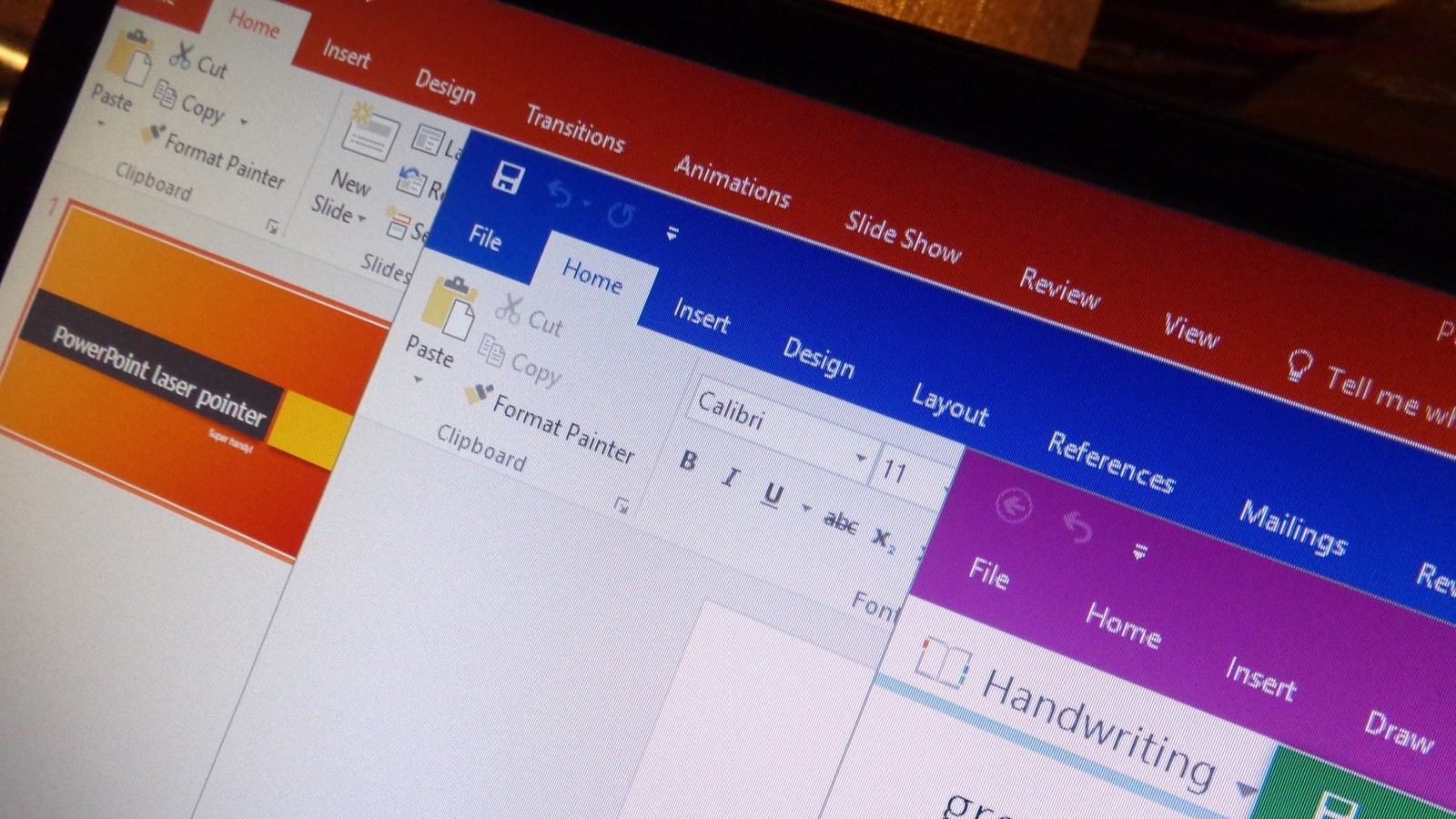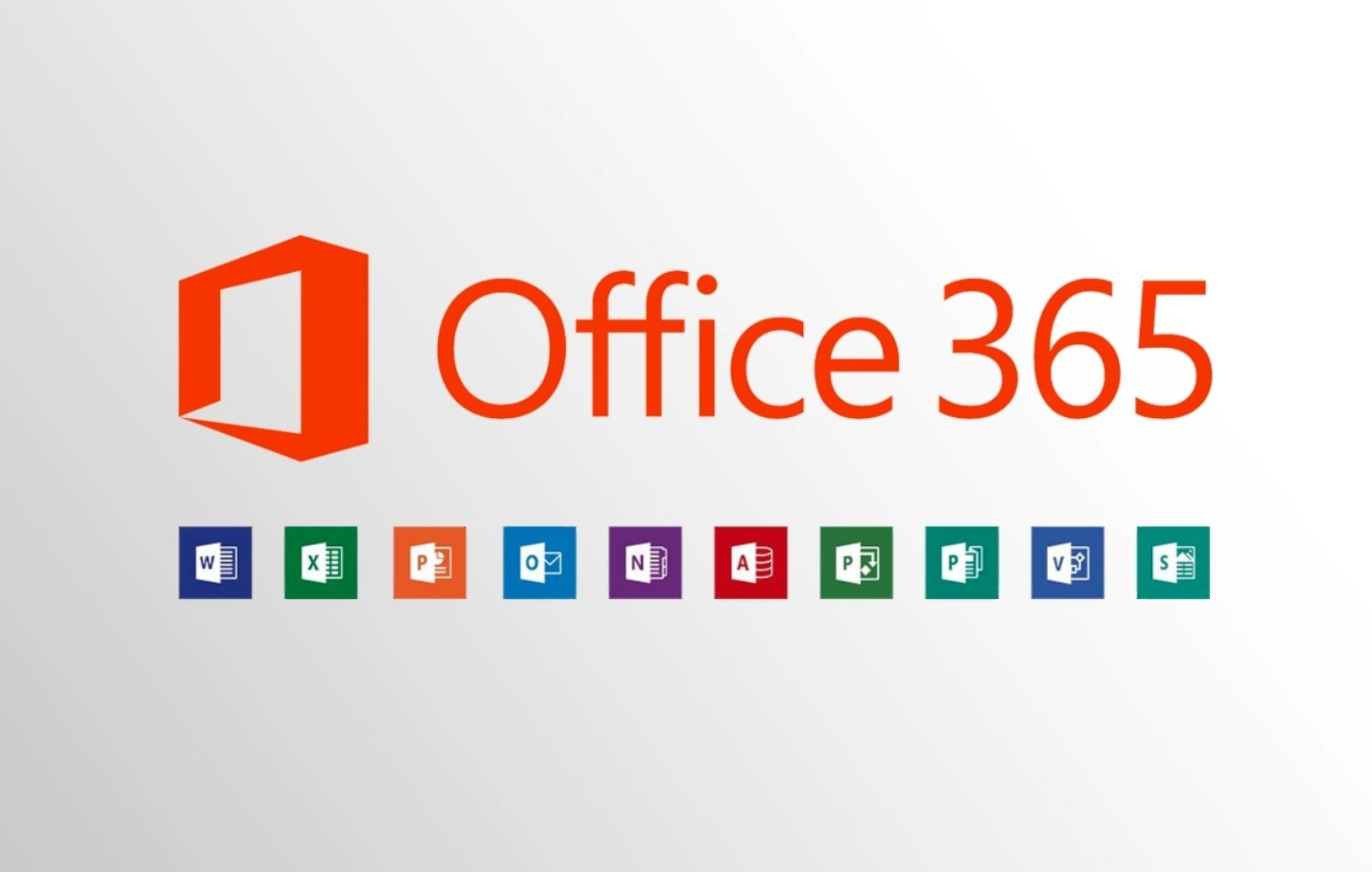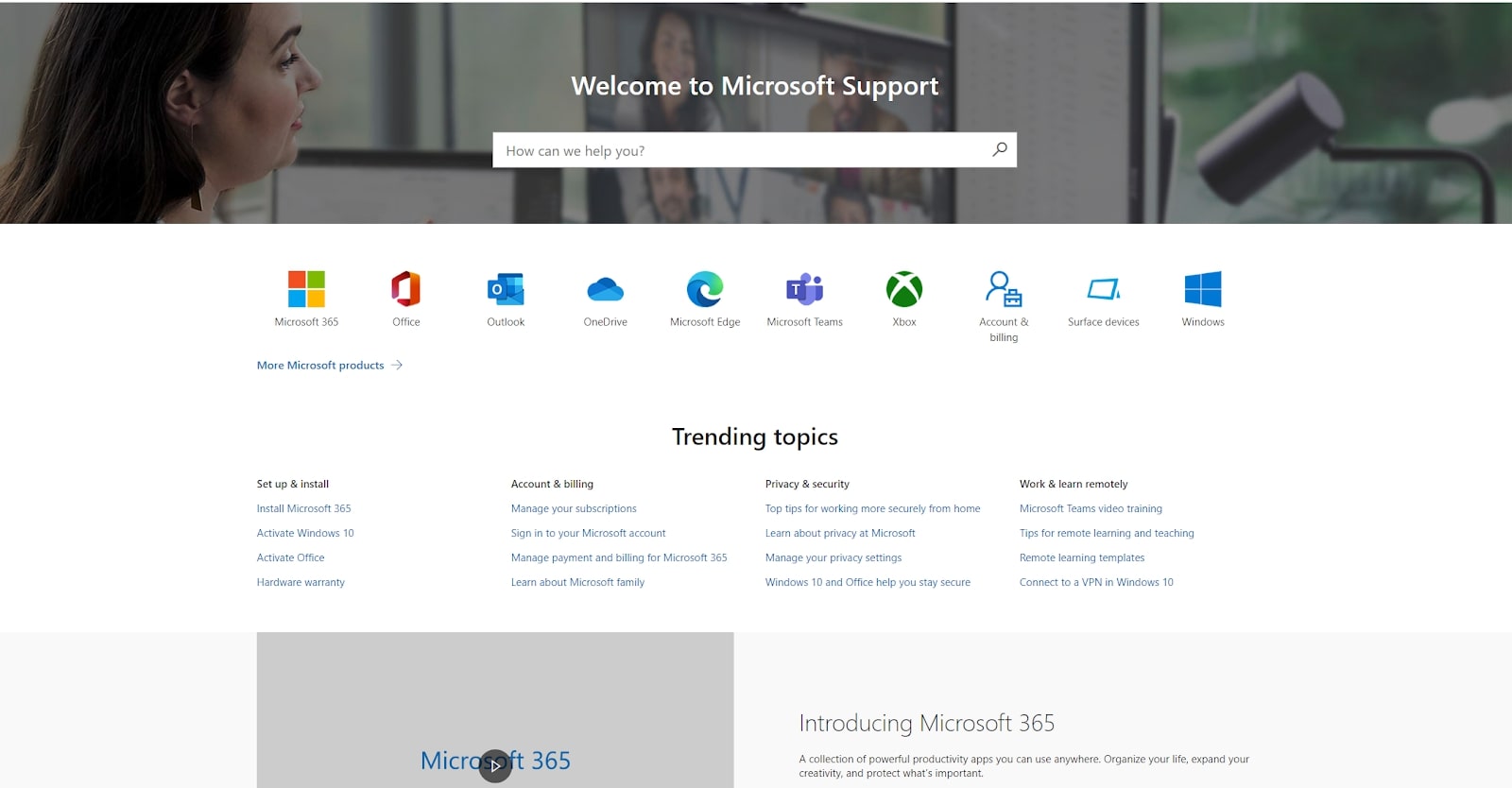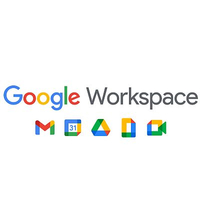Microsoft 365 vs Google Workspace: What's the best office software?
The best productivity apps for businesses of all size

Google Workspace : Collaboration + productivity apps
There are many different office software suites but Google Workspace remains the original cloud one and one of the best business office suites, offering a huge range of features and functionality that rivals can't match.
Try it free for 14 days.
Your office needs a unified productivity suite for your employees to write articles, manage spreadsheets, or deliver presentations. Microsoft Office has long been the unrivaled leader in this industry. However, the waters are now much muddier with its recent decision to move to a subscription-based purchase plan, followed by the extensive release of full-fledged productivity software from Google.
With over 200 million active users per month in 2019 and an average of three million more added every month since, Microsoft 365, formerly known as Office 365, the official successor to Microsoft Office, is still a formidable name.
On the surface, the two services appear very similar. Both are subscription-based productivity suites designed to create and manage documents in the workplace. Google Workspace is a web-based software that can work offline. Microsoft 365, on the other hand, has been offering its services via offline desktop clients, but you can also use the web-based version if you want.
The different applications that come with the two subscriptions are also very similar. You get a word processing application, a spreadsheet management solution, and a tool to create presentations. You also get an application each for emails, video conferences, and online note-taking. Then, of course, the overarching cloud storage solution lets you safely store away the files you create using these applications.
However, key service differences can make or break your business when choosing the correct productivity suite. In this article, we will compare some of the best productivity apps on the market to help you decide which is most appropriate for your specific scenario.
- The best free office software: alternatives to Word, PowerPoint and Excel
- Best productivity tools: free and paid apps
Microsoft 365 vs Google Workspace: features

Both Google Workspace and Microsoft 365 are powerful productivity suites available for Windows, macOS, and Linux desktops, catering to users with diverse needs. Google Workspace applications, being web-based, can be easily accessed through any internet browser, providing flexibility and ease of use. In contrast, Microsoft 365 applications require users to download and launch them via their respective desktop clients, which can sometimes enhance performance and access to advanced features. Additionally, for mobile users looking to boost their productivity on the go, both platforms offer companion apps compatible with iOS, iPadOS, and Android devices, ensuring seamless access to documents and collaboration tools.
Are you a pro? Subscribe to our newsletter
Sign up to the TechRadar Pro newsletter to get all the top news, opinion, features and guidance your business needs to succeed!
Document Creation and Editing
When it comes to document creation and editing, Microsoft 365 features three cornerstone applications: Microsoft Word, Microsoft Excel, and Microsoft PowerPoint.
Microsoft Word allows users to draft rich-text documents, offering a plethora of formatting options, style settings, and editing tools. It stands out with its vast array of pre-built templates that cater to different writing needs, from resumes to reports, helping users get started quickly. Furthermore, Word provides advanced options for editing tables and charts, enabling detailed data representation and document customization.
Microsoft Excel is widely recognized as the industry standard for spreadsheet management. Users can harness its extensive functionalities for data analysis and visualization, utilizing a multitude of advanced formulas, functions, and an impressive collection of chart types. The pre-made templates streamline the process of setting up new spreadsheets, making it a go-to tool for professionals in finance, analysis, and project management.
Microsoft PowerPoint enables the creation of engaging presentations with its selection of customizable templates and themes. Users can incorporate various elements such as charts, diagrams, images, videos, shapes, and animations to create dynamic presentations that captivate audiences.
Conversely, Google Workspace offers a suite of web-based alternatives:
Google Docs excels in collaborative editing. Users can easily share documents through a simple link, making real-time collaboration seamless. While it may not have as many intricate formatting options as Word, the ease of access and the ability to work together in real time are significant advantages for teams.
Google Sheets provides solid spreadsheet capabilities, allowing users to analyze and manipulate data collaboratively. Its strength lies in its simplicity and the ease with which multiple users can work together, enhancing teamwork and sharing insights instantly.
Google Slides, while not as feature-rich as PowerPoint, features a user-friendly, clutter-free interface that promotes quick learning and ease of use. Its collaboration tools allow users to work together effortlessly, making it a suitable choice for teams focused on creating presentations together.
Email and Communication
When it comes to email management, Gmail clearly stands out with its sleek interface and advanced AI-driven features like the nudge function, which reminds users of important emails. The organization of emails through labels and categories makes it intuitive.
On the other hand, Outlook offers many features that may surprise new users. Its focused inbox helps prioritize important messages, while the built-in calendar provides seamless scheduling options. The ribbon-based navigation presents a structured environment for managing emails, making it easier to locate various functionalities.
For real-time communication, Microsoft Teams (previously known as Skype for Business) is highly favored among remote workplaces. It is designed for effective text messaging and video conferencing, facilitating team collaboration with features like file sharing and integrated apps.
In comparison, Google Meet has significantly improved since the days of Google Hangouts. It now offers enhanced video conferencing capabilities alongside comprehensive collaboration tools, allowing users to work together on documents in real time during meetings.
Cloud Storage Solutions
Both Microsoft 365 and Google Workspace offer robust cloud storage solutions, with each platform providing unlimited storage on their high-tier plans. Users can take advantage of offline clients for syncing files to their desktops, ensuring access to critical documents even without an internet connection.
However, there are notable distinctions. Google Drive is celebrated for its superior search capabilities, utilizing advanced algorithms to help users quickly locate files. This can be a game-changer for businesses dealing with large volumes of data. Meanwhile, OneDrive includes a Personal Vault feature with two-factor authentication, delivering an added layer of security for sensitive data. This can be especially important for organizations that handle confidential information or sensitive client data.
Deciding between Google Workspace and Microsoft 365 ultimately comes down to your specific needs and work style. If collaboration on documents with your team is paramount, Google Workspace provides an excellent solution with its real-time editing capabilities and user-friendly interface. Conversely, if you require a comprehensive suite with advanced offline functionalities and robust customization options, Microsoft 365 may be the better choice for you. Each suite has its strengths, making them both invaluable tools for enhancing productivity in today's digital workspace.
Microsoft 365 vs Google Workspace: performance

Both suites offer services and applications that have minimal effect on your desktop’s performance. Microsoft 365’s downloadable apps are very lightweight with a reasonable file size. Google Workspace’s applications are entirely web-based, therefore having an even lighter impact on your PC.
Microsoft 365’s apps are very well integrated into Windows. Mac users can also take advantage of the same features, with similar performance outcomes. One thing to keep in mind, however, is that Office 365 requires a stable internet connection when syncing files with OneDrive’s cloud storage. There are also a few server latency issues worth considering, what with cloud storage servers located oceans apart, but these are all easily fixed by simply disabling automatic synchronization if your internet connection isn’t fast enough.
Google’s ecosystem is built into Google Workspace. The web-based applications are lightweight and speedy, but you may want to turn on offline synchronization if you don’t have a very consistent internet connection. Overall, Google Workspace apps are slightly faster than their Microsoft 365 counterparts, with even lower impact on performance.
Microsoft 365 vs Google Workspace: support

Both services offer 24/7 customer support via phone in English. As for users of other languages, hours of support can vary with time zones. There’s also email support, but the average response time for that can also vary.
Moreover, Microsoft 365 users can avail of Microsoft’s FastTrack service during deployment, which helps smoothen the processing of rolling out the productivity suite and integrating it into your organization’s workflow, with priority support. This feature has limited availability and your organization has to have at least 135 members in order to be eligible, however.
Google Workspace users, unfortunately, don’t get anything similar from Google. However, it is still possible to hire yourself a third-party data migration specialist to assist with the rollout. For this reason alone, Microsoft 365’s support system is a cut above Google Workspace as it goes above and beyond to fulfill your enterprise needs.
Microsoft 365 vs Google Workspace: pricing and plans
Microsoft 365 and Google Workspace both offer a range of pricing plans to cater to different needs.
For home use, Microsoft 365 provides options like "Family" and "Personal," which include popular applications such as Word, Excel, and PowerPoint, along with cloud storage. For businesses, Microsoft 365 has various plans that include features like email hosting, advanced security, and more, with pricing that varies based on the size of the business and specific requirements.
Similarly, Google Workspace offers a variety of plans, starting with basic options that include core apps like Gmail, Docs, and Drive. More advanced plans provide additional storage, enhanced security, and administrative controls. Google Workspace pricing is typically based on a per-user, per-month model, making it flexible for growing businesses.
Both platforms often have introductory offers and discounts available, particularly for new customers. For the most accurate and up-to-date pricing information, it is recommended to visit the official Microsoft and Google websites, use their comparison tools, or contact their sales teams for personalized quotes.
Microsoft 365 vs Google Workspace: verdict
Overall, it is hard to declare a clear winner between Microsoft 365 and Google Workspace. Each subscription comes with its unique set of strengths and weaknesses.
Generally speaking, however, Google Workspace is usually the right choice for businesses that need employees to constantly collaborate with each other on various documents. For offline users who require more features and customizability, Microsoft 365 is the best bet. Your budget will also be a core factor in your decision, as the paid plans offered by the two services differ significantly in their contents.
- Best productivity tools: free and paid apps

Ritoban Mukherjee is a tech and innovations journalist from West Bengal, India. These days, most of his work revolves around B2B software, such as AI website builders, VoIP platforms, and CRMs, among other things. He has also been published on Tom's Guide, Creative Bloq, IT Pro, Gizmodo, Quartz, and Mental Floss.
